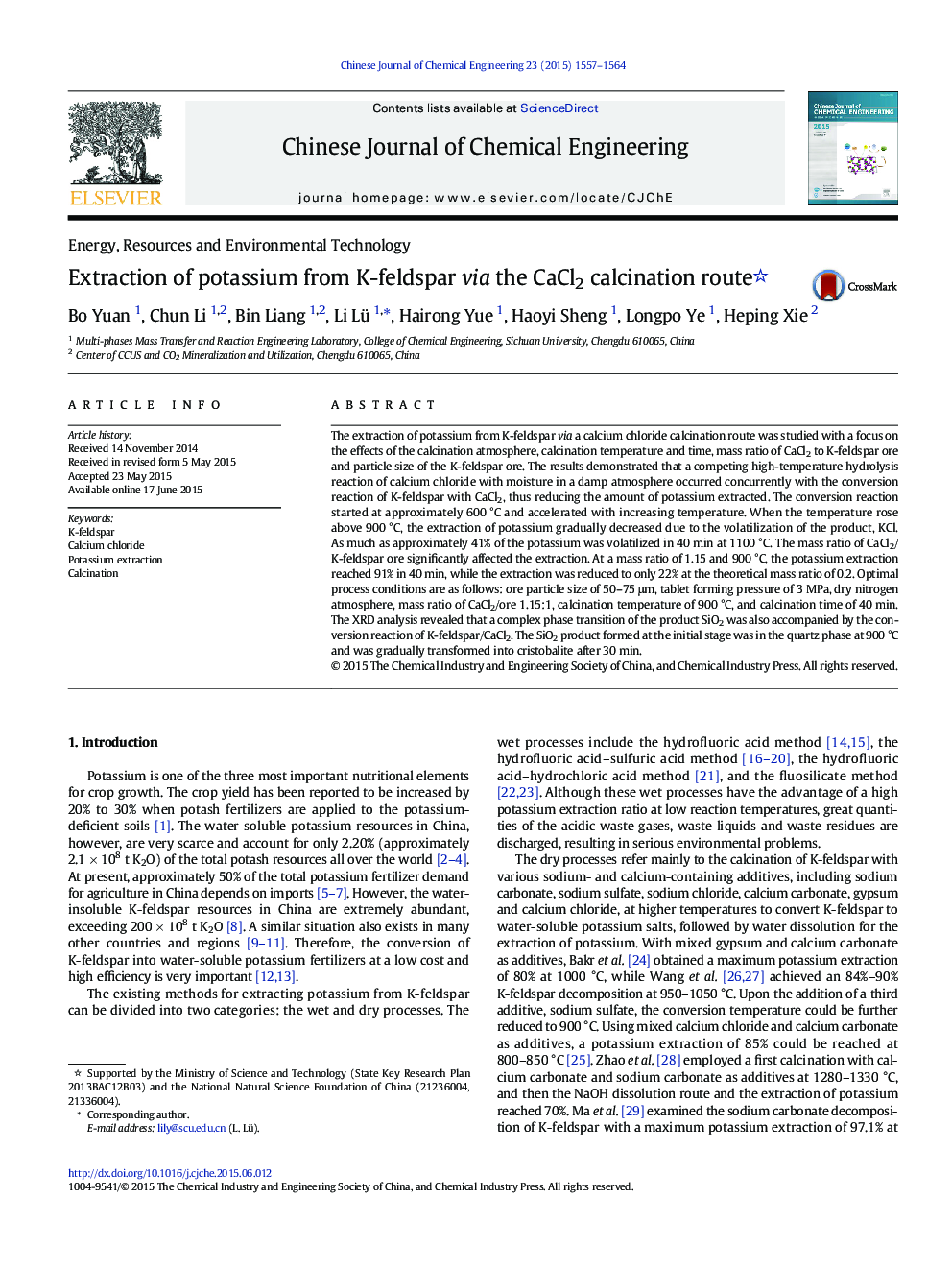| Article ID | Journal | Published Year | Pages | File Type |
|---|---|---|---|---|
| 167013 | Chinese Journal of Chemical Engineering | 2015 | 8 Pages |
The extraction of potassium from K-feldspar via a calcium chloride calcination route was studied with a focus on the effects of the calcination atmosphere, calcination temperature and time, mass ratio of CaCl2 to K-feldspar ore and particle size of the K-feldspar ore. The results demonstrated that a competing high-temperature hydrolysis reaction of calcium chloride with moisture in a damp atmosphere occurred concurrently with the conversion reaction of K-feldspar with CaCl2, thus reducing the amount of potassium extracted. The conversion reaction started at approximately 600 °C and accelerated with increasing temperature. When the temperature rose above 900 °C, the extraction of potassium gradually decreased due to the volatilization of the product, KCl. As much as approximately 41% of the potassium was volatilized in 40 min at 1100 °C. The mass ratio of CaCl2/K-feldspar ore significantly affected the extraction. At a mass ratio of 1.15 and 900 °C, the potassium extraction reached 91% in 40 min, while the extraction was reduced to only 22% at the theoretical mass ratio of 0.2. Optimal process conditions are as follows: ore particle size of 50–75 μm, tablet forming pressure of 3 MPa, dry nitrogen atmosphere, mass ratio of CaCl2/ore 1.15:1, calcination temperature of 900 °C, and calcination time of 40 min. The XRD analysis revealed that a complex phase transition of the product SiO2 was also accompanied by the conversion reaction of K-feldspar/CaCl2. The SiO2 product formed at the initial stage was in the quartz phase at 900 °C and was gradually transformed into cristobalite after 30 min.
Graphical AbstractFigure optionsDownload full-size imageDownload as PowerPoint slide
